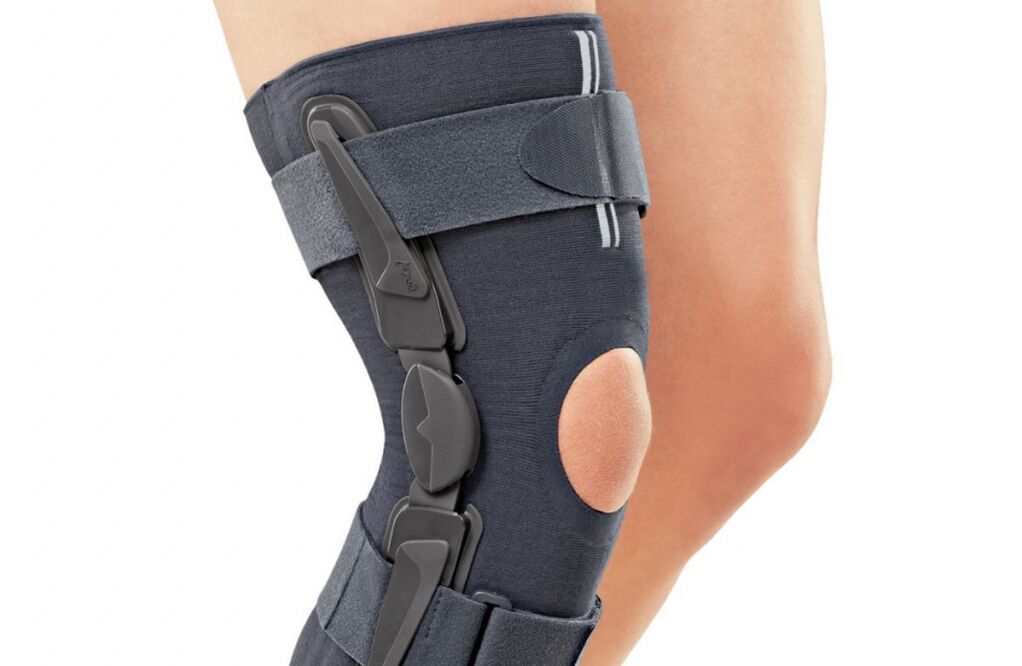
Good condition of the knee joint is important for normal movement. When joint, musculoskeletal problems, illnesses, or injuries occur, every step is accompanied by intense and sometimes unbearable knee pain. Medications and physiotherapy are prescribed to treat the knee joint. Care must be taken to protect it from external influences. For this, a knee brace was invented to secure the knee joint. Such devices are made of different materials, have different degrees of protection and have a wide range of applications.
Indications for use of the knee brace

Such fixation devices are used not only to protect the affected joint, but also to reduce the load and normalize its function after injuries and surgery. Knee pads can be used both for therapy (such as arthrosis) and to prevent various diseases. However, the device can only be worn after the appointment of a doctor, otherwise it will damage the blood supply to the joint and aggravate the problem.
Wearing a knee brace is indicated for both the treatment and prevention of various pathologies. It is often recommended for athletes to wear to avoid injury. The fixation device is prescribed for therapy:
- arthrosis and arthritis;
- dislocations and subluxations;
- rheumatic pathologies;
- ficamok;
- injuries and the resulting joint instability.
The use of a fixative is often prescribed during the rehabilitation period after complex injuries or surgeries.
It is recommended to wear an orthosis for the following purposes:
- relief of a damaged knee joint. The device is recommended for those suffering from joint diseases when any step is accompanied by unbearable painful feelings that significantly slow down healing;
- prevention of pathologies and injuries. Athletes and those working in commerce and construction are required to use knee pads and bandages for sports. People who are overweight should wear a special elastic knee brace;
- fixation of the injured knee joint. In this case, a compression bandage is prescribed to help prevent further damage to the knee or meniscus, reducing severe pain and swelling. In this case, the fixation device is a kind of additional stabilizer for the joint;
- restrictions on movement. This requires a rigid bond that completely eliminates movement.
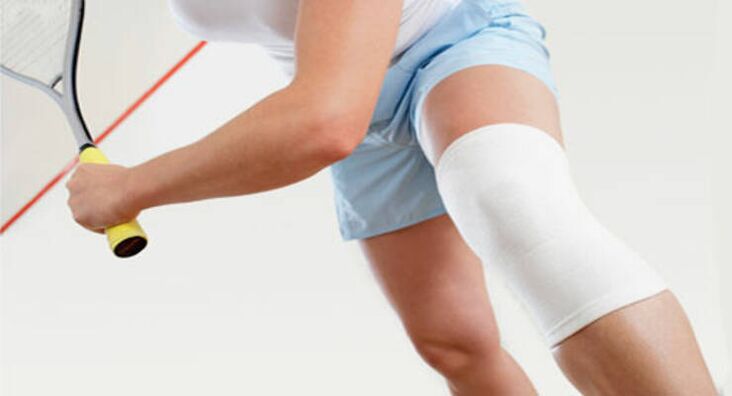
Knee pads help:
- Accelerate the healing process.
- Avoid injury to the meniscus and knee.
- Strengthening the damaged joint.
- Keeping the patient moving.
- Reducing pain.
- Improving lymphatic and blood flow.
- Eliminate bloating.
- Minimization of inflammatory processes in the joint.
- Load reduction.
- Facilitate knee movement.

In addition, orthopedic fasteners are an excellent alternative to impractical plaster casts.
What materials are orthodontics made of?
A significant amount of material is used to make the orthoses. The most popular are:
- Dog fur. It is used in the manufacture of warming knee pads.
- Cotton. It is used to ensure the strength and flexibility of the clamps.
- Lycra, elastane, polyurethane - synthetic, elastic fabrics with high breathability.
- Neoprene. An elastic material that contributes to the excellent fixation of the knee joint. These knee pads are easy to care for. In addition, they have a warming effect.
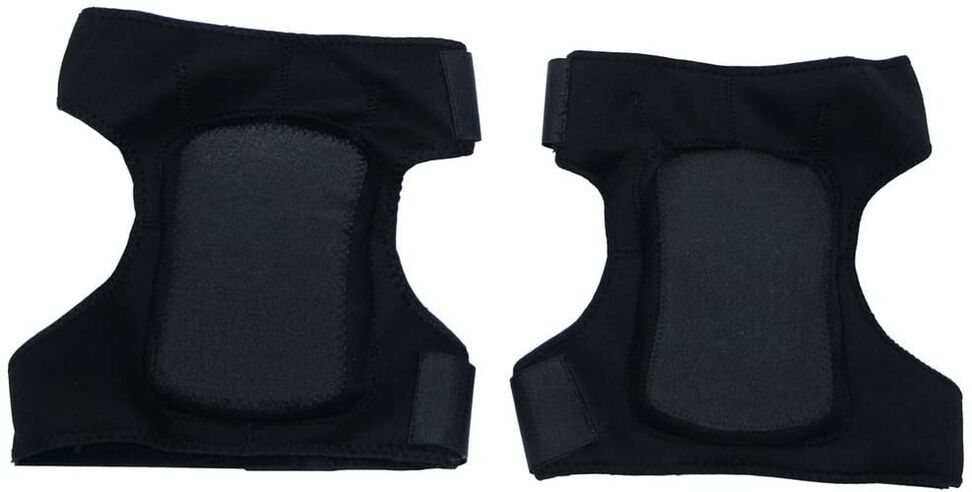
Devices for fixing the knee: varieties
There are many models and types of this orthopedic device. They differ in the material they are made of. The knee brace can be open or closed, flexible or rigid. In addition, the knee pads can be equipped with hinges, metal inserts, magnetic plates, silicone rings and even an infrared heating source.
Depending on the mounting purpose of the product, it is presented in the following versions.
- Bandage. Elastic corset that helps secure the knee zone, warms and reduces the load.
- Orthosis. They are similar to the bandage, but more functional.
- Caliper. It is used for preventive purposes, it helps to maintain the knee joint and prevent damage.
- Stiffener. A rigid knee brace that is used in most cases during the rehabilitation period. Assign such kneecaps to arthrosis.
- Instructor. Metal tire-shaped device with rigid attachment. Assign after surgery or injury. Soft materials are mainly used to make such knee pads. This device is hypoallergenic.
- Elastic knee pad. Lots of familiar tools, convenient and easy to use.
- Tape. Flexible adhesive tape. The purpose of taping is to reduce the load on the muscle and tendon ligaments.
Knee brace in detail
The bandage on the knee joint is used to easily secure the knee. The knee pad helps to minimize the load, but such devices do not impede movement. The fasteners are made of cotton, synthetics and knitwear.
The orthosis is somewhat similar to the bandage. The main difference is the presence of additional elements in the first. Such products are functional depending on the cause and help to fix the knee joint. Can be fitted with rigid ribs and inserts, silicone rings, side hinges. You can secure the knee brace with velcro.
The rail is a special rail whose main purpose is medium or hard mounting. The device is much more comfortable and practical than the gypsum rail. In addition, using a splint instead of a plaster cast significantly reduces the time it takes to restore knee function.
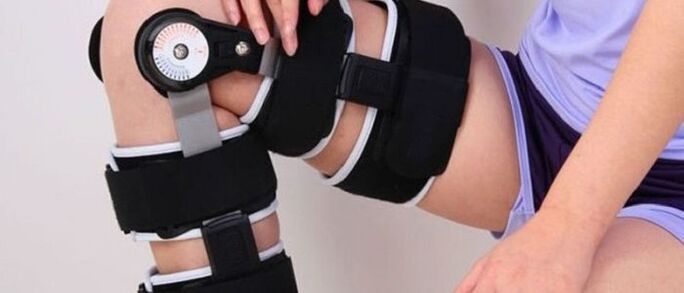
As for the stiffener, the main purpose of such a knee brace is to fully immobilize the knee. The knee brace is equipped with hinges that allow the patient to move without straining the knee, as well as neoprene-covered braces to help perform the necessary movements without injuring the meniscus. Such devices are used to fix the joint in diseases such as osteoarthritis and gonarthrosis, as well as rupture of the meniscus.
The calipers are designed for people who are active in sports and lead an active lifestyle. The caliper helps prevent the risk of various injuries, protects and fixes not only the joint but also the side muscles and ligaments, the kneecap and the meniscus.
Flexible bonding was highly valued before the advent of modern fasteners. It was used during sports to prevent injuries and minimize pain.
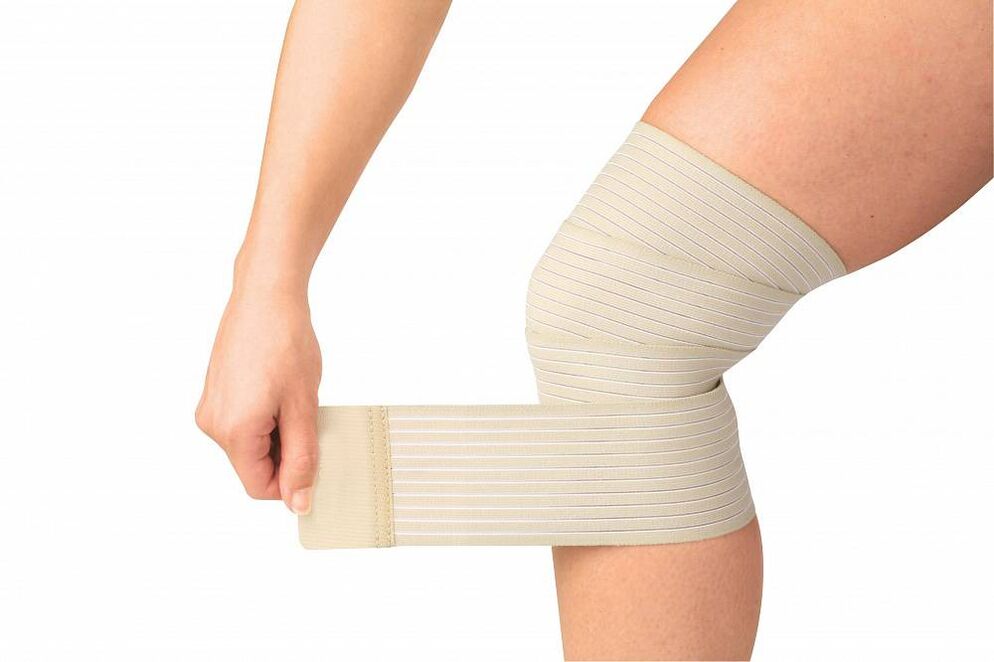
The tape is a unique bandage equipped with a special adhesive surface. When used properly, the product does not pinch the joint and does not restrict movement, but on the contrary, performs a micromassage on the skin. Cotton is mainly used to make such clamps. This product helps reduce pain in the affected joints, swelling and bruising.
Suggestions for choosing a knee brace
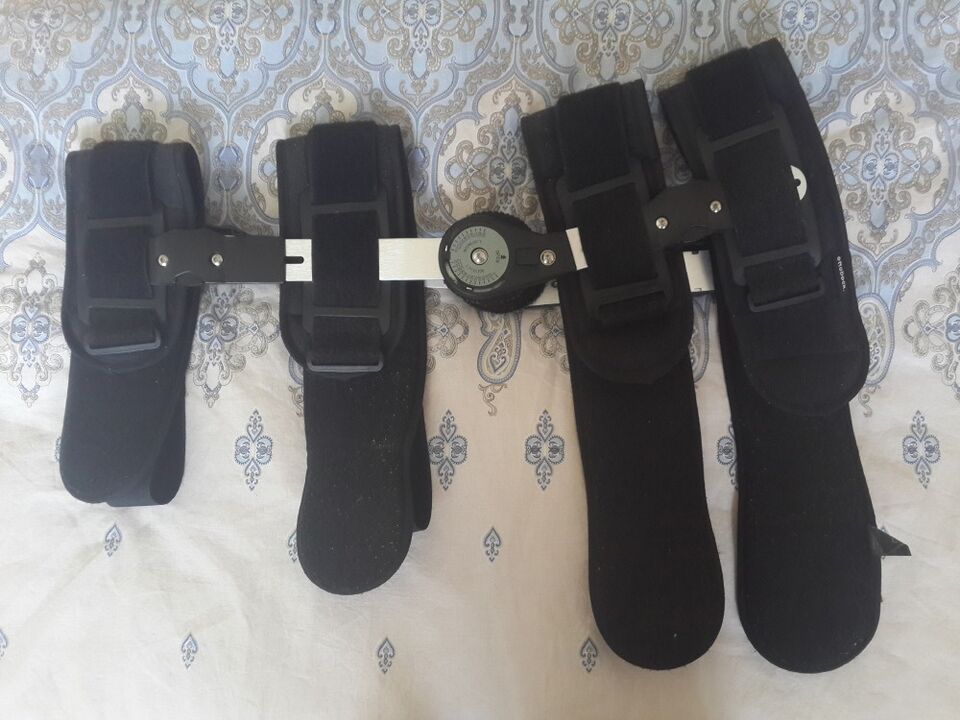
The knee orthosis is selected by a qualified professional only, depending on the purpose of use. The knee pad must match the individual parameters of the knee. Under no circumstances should you choose a tool on your own, especially if you are complaining of pain. Improperly selected knee braces can be harmful. Ideally, the knee pad should fit the knee, secure the joint, but do not squeeze. In the event that the product is large, it will slip and therefore will not perform its functions.
You only need to buy the bandage at a specialty store. The price of orthoses may vary depending on the manufacturer, model, and features of the device.
As for size, you can define your own as follows: measure your feet a little above your knees (about fifteen inches). If the circumference of the hips is 44 cm, then your size is S, 44-54 cm - M, 54-60 cm - L, 60-67 cm - XL, 67 and more - XXL.
To avoid confusion with size, be sure to weigh the product before purchasing.
How to care for a knee brace
In order for the orthopedic knee brace to serve you for a long time and not lose its therapeutic and preventive properties, you must take care of it and follow the operating rules prescribed in the instructions.
- Do not wash the bandage in the washing machine.
- Do not iron the latch.
- Do not hang the product to dry. Lay on a flat surface. This prevents the orthosis from deforming and elongating.
- Do not use additional chemicals during washing.
You can only use the bandage after a medical prescription. If you are exercising and decide to take care of the condition of your joints during training, it is advisable to buy an orthosis in the presence of a trainer. Do not wear a knee brace for more than three hours a day. Wear it only during sports or gym therapy.



































